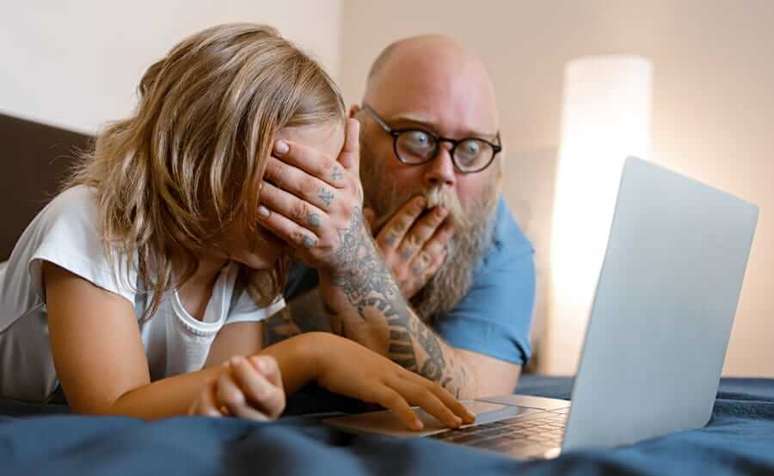How to control the content accessed by children and teenagers without compromising privacy?
html[data-range=”xlarge”] figure figure img.img-d28dc12c14520a3100519af737019a0a9demjmb4 { width: 774px; height: 476px; }HTML[data-range=”large”] figure image img.img-d28dc12c14520a3100519af737019a0a9demjmb4 { width: 548px; height: 337px; }HTML[data-range=”small”] figure image img.img-d28dc12c14520a3100519af737019a0a9demjmb4, html[data-range=”medium”] figure image img.img-d28dc12c14520a3100519af737019a0a9demjmb4 { width: 564px; height: 347px; }HTML[data-range=”small”] .article__image-embed, html[data-range=”medium”] .article__image-embed { width: 564px; margin: auto 0 30px; }
According to the United Nations Children’s Fund (Unicef), 89% of children aged 9-17 worldwide have used the internet at some point in their lives. The reach of digital media in contemporary life and everyday life is a topic of discussion, from psychology to public safety, from governments to the classroom.
And that’s no wonder, since studies have shown that there is an intimate relationship between the use of digital platforms and the increase in the number of attacks in schools, for example.
But how to exercise parenthood in the digital age? How to control the content accessed by children and adolescents without compromising the privacy pact, so important for human beings?
For Fernando Brafmann, school protection and safety consultant for Grupo Positivo schools, it is about understanding that the mobile phone is a gateway to a world that does not only have positive content.
“Before the massive use of cell phones, parents wanted to know who their children’s friends were, where they lived, what their families were like. On the Internet, the reasoning should be the same. You need to know what kids are watching and how they consume this content,” she warns.
What is combined is not expensive
Whenever we talk about parental controls, the other side of the coin is the possible loss of privacy for the person being monitored. This becomes a problem, especially in the case of adolescents, who are already in a phase of personality development that requires a certain distance from parents and guardians.
According to the specialist in Educational Psychology and Inclusive Education of the Grupo Positivo schools, Michele Norberto, this can be solved with well-defined rules between parents and children.
“Everything that is built together with them is much stronger. So ideally, kids and teens should always know that their parents have access to their phone and the content they access. Don’t hide that you have this control, but explain why it’s necessary,” he guides.
Get to know the virtual world in which young people circulate
Instagram, TikTok, Twitter. The many names and numerous functions of each platform or social network often escape the understanding of parents. However, knowing each of them is essential for digital parenting. Therefore, it is important to try to understand what these tools are for and how young people use them. Brafmann points out that, today, it is common for teenagers to have even more than one profile on each social network.
“They’re doing this to escape parental control, so you have to assume that’s happening and look to the dialogue to understand what’s being shared in each of these profiles,” she points out.
watch the signs
Children and adolescents give signs that something is wrong. The presence of parents and educators, in this sense, is essential. If the child hides the mobile phone in the presence of the parents, for example, or pauses the content she was watching, this could be a sign that something is wrong.
In the case of adolescents, changes in behavior, irritation, isolation, constant sadness should be observed. Deleting your browsing history, not wanting to answer calls or messages, for example, are warnings that cannot be ignored.
Configure your phone according to age
Current mobile phones allow, in their settings, to define which applications can be installed. It is also possible to block usage after a certain time or time of day.
These features are very important for parents to be able to better monitor what is happening on the screens that their children have access to. This should be done according to the child’s age, says Brafmann.
offer help
Sexting, cyberbullying, threats and other problems are part of everyday life with digital tools. And young people need to understand that they have someone they can rely on at home to address these issues.
“When parents already have a partnership process with their children, it is easier to establish this path of dialogue. It is a building process for children to rely on their parents to solve any problems associated with using the Internet,” Michele points out.
Fernando Brafmann and Michele Norberto are the guests of the eleventh episode of the “Conexões” season, on Posicast, produced by the schools of the Grupo Positivo, whose theme is “Parenthood in the digital age: strategies for content control”. All episodes are available on Youtube.
HOMEWORK inspires transformation in the world of work, in business, in society. Created by Compasso, a content and connection agency.
Source: Terra
Ben Stock is a lifestyle journalist and author at Gossipify. He writes about topics such as health, wellness, travel, food and home decor. He provides practical advice and inspiration to improve well-being, keeps readers up to date with latest lifestyle news and trends, known for his engaging writing style, in-depth analysis and unique perspectives.







